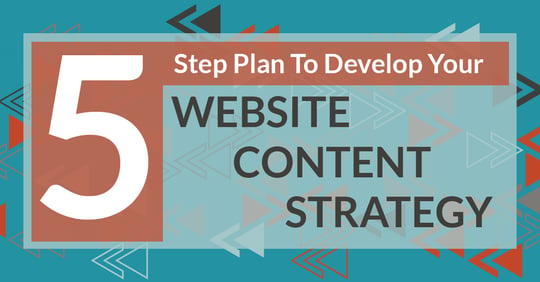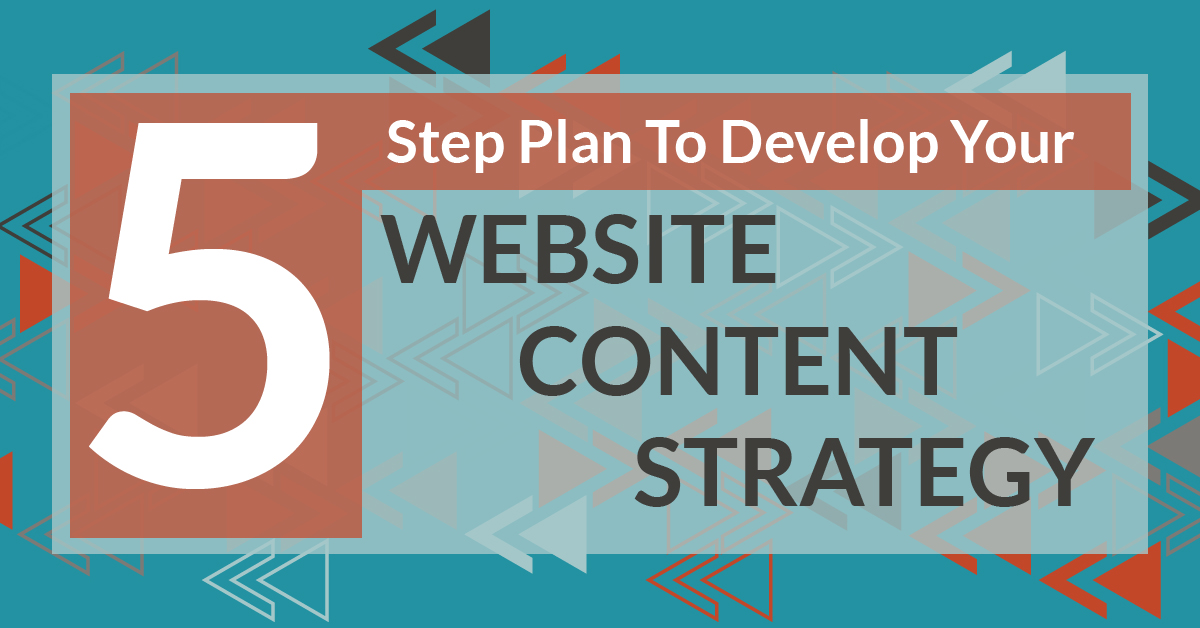5-Step Plan To Develop Your Website Content Strategy

Are you planning a new website for a new brand, or among the more than half of marketers surveyed recently by HubSpot who said they were planning to upgrade their website in the coming year?
There are many things to consider as you plan a business website, whether building one from scratch or looking for ways to breathe new life into an existing website and marketing strategy.
- What platform will you use to build the site?
- Who will build the site?
- What design features are important from both visual and functional perspectives?
But you also need to put a focus on the content that the site will include—from homepage text to product descriptions, FAQs, a business blog and more. It is that content, along with technical aspects such as page loading time, that will influence whether visitors can find your website and whether their experience with your website is a positive one.
(If you aren’t sure whether your website needs to be updated or upgraded, use our Website Audit Template to rate its current performance and user experience.)
1. Identify who your website users are: prospects, current customers, jobseekers, current employees, analysts, and more.
As with most things marketing-related, one of your first steps should be identifying who you are trying to reach. Who are you creating content for? This question is just as important when planning out your website content as it is when you are writing social media posts.
(FWIW, your other primary first step in developing marketing strategies and plans is setting goals. More on that here: Ask The Right Questions, Set Measurable Goals, and Deliver On Expectations.)
A company website will, by default, have many different audiences. At the forefront in most marketers’ minds obviously will be prospects, leads and customers. But even within those groups, it is important to consider the individual customer personas represented. Personas are fictionalized, generalized representations of your ideal customers that help you understand your customers (and prospective customers) better, and make it easier for you to tailor content to the specific needs, behaviors, and concerns of different groups. (Download examples of customer personas here.)
Your website will need to provide information needed by both prospects and leads, who may be looking to your company for solutions, and by current customers. It will also need to address additional audiences, which may include current employees, jobseekers, industry analysts, media outlets or others. Each of these groups may need something different, which brings us to Step 2.
2. Identify what each user wants or needs from your website and how they want to access it.
Remember that the goal of your website is to serve your audience—not yourself. (Really, though, we know that serving your audience well will benefit your business. So it’s a win-win.)
As our partner HubSpot suggested in their blog post companion to their latest survey and report:
Start by making the effort to understand users’ intent. Different visitors are looking for different types of information based on their familiarity with your business and position in the buyer’s journey.
This means your website should include a variety of information and facility a variety of ways to obtain it and react to it.
This is where our philosophy of developing full-funnel content campaigns comes in to play in your website content strategy: Plan website content to reach all levels of the sales funnel, from those who are just stumbling across your business for the first time, to leads narrowing down their purchase decisions, and customers seeking support and a deepening relationship.
Think about all the ways your audiences will access your information: mobile, desktop, or even voice search through smart speakers. Some will want video, some will want quick answers, others will be seeking detailed information and testimonials.
Here are few things to consider:
- While 75 percent of consumer video consumption is on mobile devices, 87 percent of B2B videos are viewed on desktop or laptop computers. (More)
- Buyers want content that speaks to their needs, provides product/service specifications, and is more educational than promotional. (More)
- Content B2B buyers say they have actually used to make a purchase decision is led by case studies, white papers and webinars. (More)
Build your website content strategy around the idea of providing your audience with what they need and want from you, not just what you want them to see.
3. Determine what information must be included immediately and what information/content can be built up over time.
If you are simply updating and upgrading an existing website, you will already have a large portion of your basic content created, but if you are creating a new website, you need to decide how much content is essential before launching the new site.
Beyond the very basic homepage, what is essential before any visitors see the page?
You will most likely need to create product or service descriptions, an “about us” page, possibly FAQs, and “contact us” options before the site goes live.
Consider from there what sections your website should include that can be built upon as time passes. Some that you may consider include:
- A “news” or media page for press releases and company updates.
- A business blog designed to provide additional content for SEO and lead generation, focused on answering your prospects’ and customers’ needs and pain points.
- A resource library of downloadable materials, which can be gated to provide lead generation opportunities. These could include ebooks, templates, checklists, case studies and more.
- A testimonial page highlighting your successful customers and your solutions in action.
Each of these are sections of your website that you should build onto steadily over time, increasing your website’s SEO performance and providing an ever-growing library of content for your audience.
Fresh content is important for several reasons:
- It gives website visitors a reason to keep coming back, and to stay on your site for a while. Reader signals, such as time on site and the number of pages visited during a session, help search engines identify sites with quality content and information, moving them up the rankings.
- Search engine crawlers recognize fresh pages and new content to index – more content indexed can lead to improved search engine results.
- In addition to giving readers a reason to return, fresh high-quality content also provides additional reasons for others to link to your website. Again, backlinks improve your site’s SEO.
4. Audit your existing website and its content to determine what content should be replaced or updated.
If your project is to update an existing website, the first step should be a complete audit of the site, including:
- Benchmark data, such as number of monthly visitors, bounce rate, number of new leads/form submissions and total number of pages indexed
- Technical performance, including site speed, mobile performance, SEO and lead generation infrastructure
- Design elements, including logo, colors, typography, images and layout.
- Content, including cataloging existing blog posts, news releases, FAQs, and downloadable resources
When you create a full inventory of your existing content, you can use that as a starting point for your new site, while also making note of where there are gaps in the information provided and updating information as needed. This is also the time to weed out unneeded and outdated content that no longer reflects your brand, messaging and marketing objectives.
5. Plan monthly or quarterly campaigns that support your marketing objectives—SEO, lead generation, sales—and continue to fill your website content holes.
Your updated website should include a commitment to continuing to build on the content you already have, using full-funnel content marketing campaigns that coordinate amongst all of your channels, including the website.
Use the debut of your new website design as the starting point for committing to a regular business blog, which can be used in conjunction with downloadable offers gated behind landing pages to generate leads. Your blog will also provide fodder to fuel social media campaigns, and can be used as a valuable resource for email marketing and lead nurturing, providing reasons for prospects and leads to visit your website.
You can use a tool like our Campaign Planning Calendar Template to sketch out the content you will create—blog posts, reports, social media updates, emails, case studies and more—over the course of year, with each month or topic dedicated to providing information your customers want and need and filling in any gaps in your current website content.
For more reading on upgrading a business website to meet today’s needs, planning your content marketing, and developing full-funnel campaigns, check these additional posts:
- Your 2020 Guide To Web Strategy & The State Of Marketing
- Your 2020 Guide To Content Marketing Strategy & The State of Marketing
- Why You Should Start A Business Blog Now: SEO & Lead Generation
- How To Plan Complete Integrated Marketing & PR Campaigns (video)
- Rate Your Business Website
- Choosing A Website Builder & Platform: What To Consider
Is a new or upgraded website in your future? What questions do you have about how to optimize it for the way consumers and business customers use business websites today?
Schedule a time on my calendar if you’d like to chat about what your website needs in order to meet the needs of your customers and your business.
-1.png?width=1652&height=294&name=Jones(RGB)-1.png)









.png?width=352&name=Jones_blog_image_april1(2).png)


